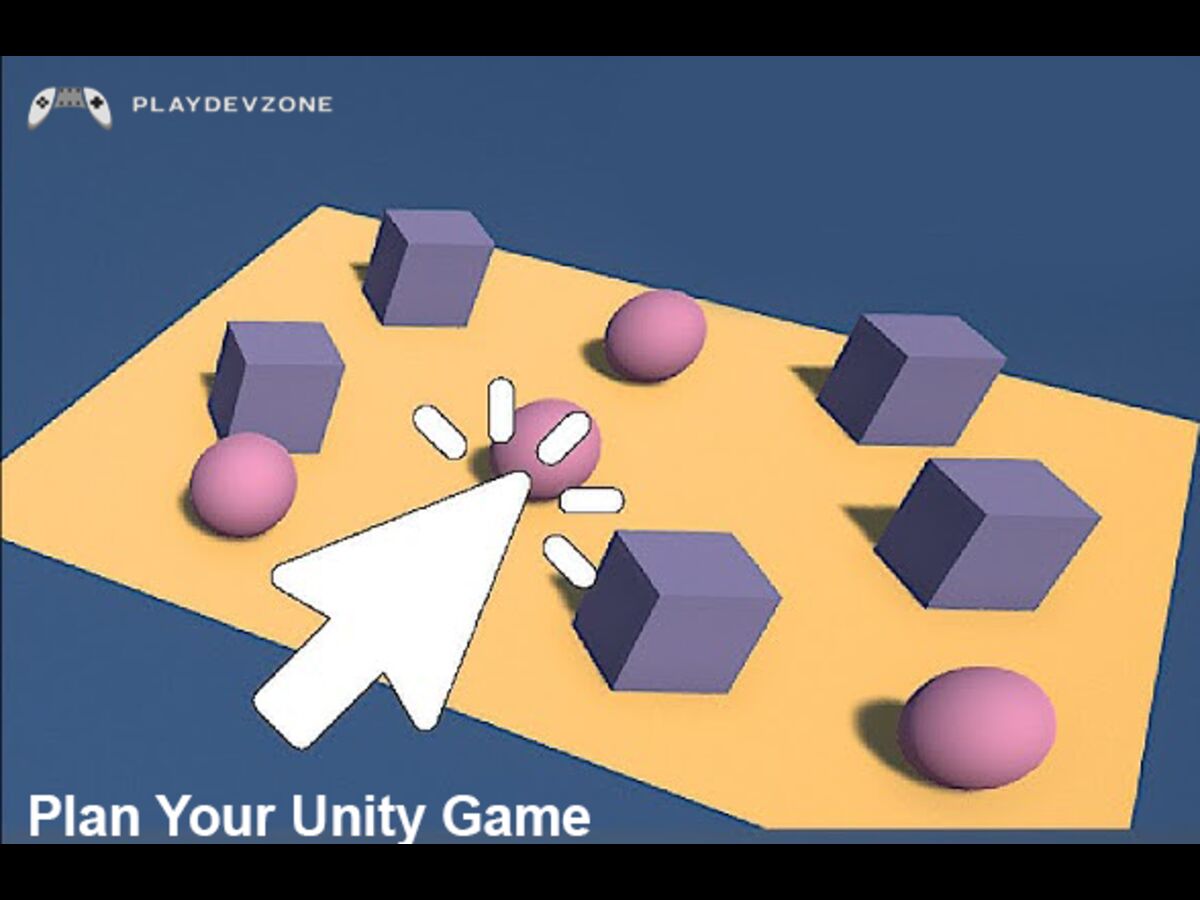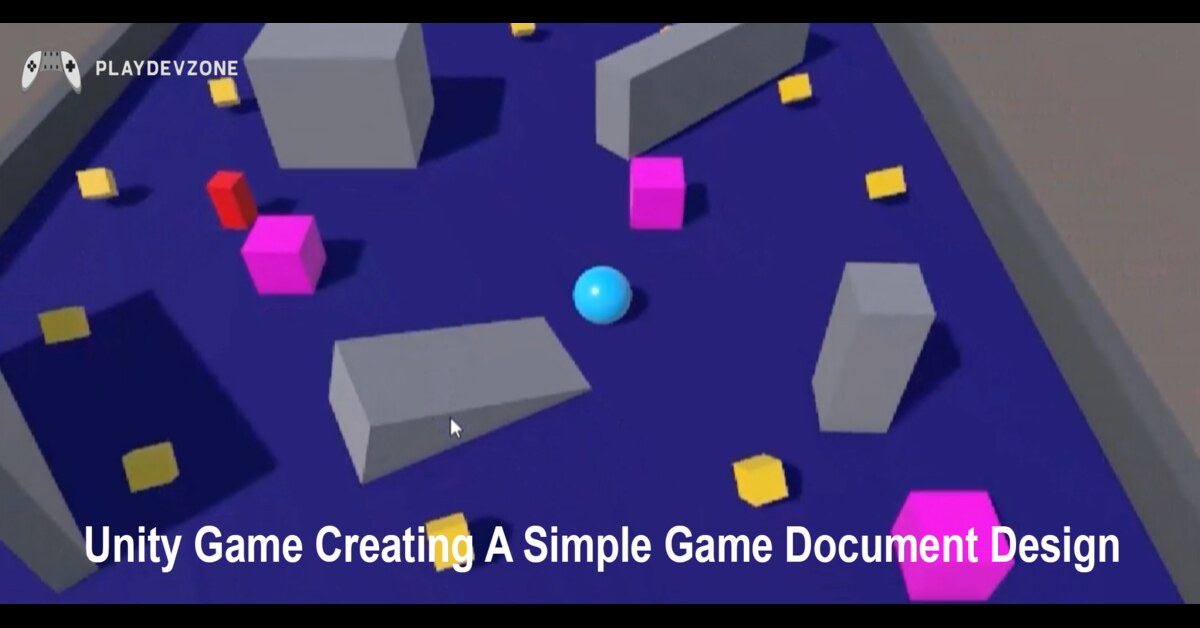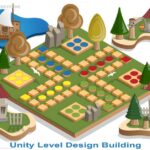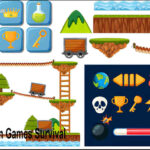Are you ready to bring your dream game to life in Unity, but not sure where to start?
The secret to every successful game, whether it’s a small indie project or a large-scale production, begins long before the first line of code. It starts with a clear and well-structured Game Design Document (GDD).
In this post, we’ll show you how to plan your Unity game step by step by creating a simple, effective game document that keeps your ideas organized and your development process smooth.
You’ll learn how to define your game’s core concept, mechanics, story, art style, and goals in a single powerful document that turns your imagination into a concrete blueprint.
Whether you’re a beginner just starting in Unity or an experienced developer looking to improve your workflow, this guide will inspire you to plan smarter, stay focused, and turn your vision into a game that players will love.

In this post, we’ll show you how to plan your Unity game step by step by creating a simple, effective game document that keeps your ideas organized and your development process smooth ( Game Document Design ).
You’ll learn how to define your game’s core concept, mechanics, story, art style, and goals in a single powerful document that turns your imagination into a concrete blueprint.
Whether you’re a beginner just starting in Unity or an experienced developer looking to improve your workflow, this guide will inspire you to plan smarter, stay focused, and turn your vision into a game that players will love.
Why You Need a Game Design Document Before Starting in Unity
Before you dive into Unity and start building your dream game, take a moment to plan with a Game Design Document (GDD).
A well-crafted GDD acts as your game’s blueprint, organizing your ideas, defining mechanics, and keeping your creative vision clear from start to finish ( Game Document Design ).
Without one, it’s easy to lose focus or waste time reworking features.
By writing a Game Design Document before starting in Unity, you’ll streamline development, collaborate more effectively, and turn your concept into a playable reality faster.
Remember, excellent games aren’t just built; they’re carefully planned first.
Understanding the Basics of a Game Design Document (GDD)
A Game Design Document (GDD) is a comprehensive blueprint that outlines every aspect of a video game’s design, development, and gameplay.
It serves as the central reference for everyone on the development team designers, artists, programmers, writers, and producers ensuring everyone shares the same vision for the game ( Game Document Design ).
Let’s break down the basics of a GDD and what it usually includes:
1. Overview / Game Summary
This is the introduction and elevator pitch of your game — short, clear, and engaging.
Includes:
Game Title: Working or final name.
Genre: (e.g., Action, RPG, Puzzle, Simulation).
Platform(s): PC, Console, Mobile, Web, etc.
Target Audience: Age group, demographics, player type.
Game Vision / Hook: What makes this game unique? Why will players care?
2. Gameplay and Mechanics
This section defines how the player interacts with the game and what the core experience feels like.
Includes:
Core Gameplay Loop: The main repeated set of player actions (e.g., explore → fight → upgrade → repeat).
Controls: Player inputs and how they affect gameplay.
Game Rules: Win/loss conditions, scoring, or progression systems.
Mechanics: Core systems (combat, crafting, physics, movement, etc.).
Balancing: Difficulty, pacing, and player progression ( Game Document Design ).
3. Story and Narrative
If the game has a story, this section defines its world, plot, and characters.
Includes:
Setting / Worldbuilding: The game’s universe, lore, and tone.
Plot Summary: Main storyline and key events.
Characters: Bios, motivations, and relationships.
Dialogue / Narrative Style: How story elements are delivered (cutscenes, text, voice-over, etc.).
4. Art and Visual Style
Defines the visual identity of the game ( Game Document Design ).
Includes:
Art Direction: Mood boards, color palettes, overall aesthetic.
Character Design: Concepts, proportions, costumes.
Environment Design: Locations, atmosphere, level style.
UI/UX: Menus, HUD, icons, and player interface design.
5. Audio Design
Outlines the sound and music vision.
Includes:
Music Style: Mood, instrumentation, composer notes.
Sound Effects: For characters, UI, environment, etc.
Voice Acting: Tone, casting, languages.
6. Technical Specifications
Details how the game will be built and function.
Includes:
Engine: Unity, Unreal Engine, Godot, custom engine, etc.
Programming Languages: C#, C++, Python, etc.
Performance Goals: FPS targets, memory limits, platform constraints.
Networking: Multiplayer features or online systems.
7. Level Design
Describes the game’s stages or environments.
Includes:
Maps and Layouts: Level flow, key locations.
Objectives: What players must achieve per level.
Challenges: Enemies, puzzles, or hazards.
8. Monetization (if applicable)
Especially important for mobile or free-to-play games ( Game Document Design ).
Includes:
Pricing Model: Premium, freemium, subscription, ads.
In-Game Purchases: Cosmetics, power-ups, or expansions.
Rewards Systems: Incentives for continued play.
9. Production Plan
Covers how and when the game will be developed.
Includes:
Team Roles: Who does what (design, programming, art, etc.).
Milestones / Timeline: Phases like prototype, alpha, beta, release.
Tools and Pipelines: Version control, asset management, bug tracking.
10. Appendices / References
Supporting material for further clarification ( Game Document Design ).
Includes:
Concept art
Flowcharts or wireframes
Reference images or inspirations
Step-by-Step: How To Plan Your Unity Game
Before you start coding in Unity, having a clear roadmap is essential for success.
In this step-by-step guide on how to plan your Unity game, you’ll learn how to transform your creative idea into a structured, achievable project.
From defining your core concept and gameplay mechanics to organizing assets and setting milestones, proper planning ensures smoother development and fewer obstacles ( Game Document Design ).
Whether you’re a beginner or an indie developer, following these steps will help you stay focused, work efficiently, and bring your game vision to life with confidence and clarity.
Step 1: Define your core game idea and player goals.
Step 2: Choose the right Unity tools and assets for your project.
Step 3: Outline your game’s features and mechanics in the GDD.
Step 4: Create mockups, sketches, or flowcharts to visualize gameplay.
Step 5: Plan your development timeline and milestones.
How To Design a Simple and Effective Game Document
Learning how to design a simple and effective game document is one of the smartest steps you can take before developing your Unity game.
A well-structured Game Design Document (GDD) keeps your ideas organized, your goals clear, and your workflow smooth ( Game Document Design ).
Focus on outlining your game’s concept, mechanics, visuals, and story in a concise, easy-to-follow format.
Simplicity is key to avoiding overcomplicating details and instead creating a document that guides your development journey.
With a clear and compelling GDD, you’ll turn your creative vision into a playable, polished Unity game faster and with more confidence.
Turning Your GDD Into a Working Unity Project
Now that your Game Design Document is complete, it’s time to bring your ideas to life by turning your GDD into a working Unity project.
Start by breaking your design document into actionable tasks: import assets, build core mechanics, and test gameplay step by step.
Use your GDD as a roadmap to stay focused, track progress, and maintain consistency throughout development.
Unity’s powerful tools make it easy to transform your written vision into an interactive, playable experience ( Game Document Design ).
With careful planning and creative execution, your GDD becomes more than just words; it becomes the foundation of your next great game.
Common Mistakes to Avoid When Planning Your Unity Game
When starting your Unity project, it’s easy to make errors that can slow down development.
Knowing the common mistakes to avoid when planning your Unity game can save you time and frustration.
Many beginners skip creating a clear Game Design Document, overcomplicate mechanics, or ignore testing early prototypes ( Game Document Design ).
Others underestimate the importance of scope and resource management.
Avoid these pitfalls by setting realistic goals, carefully planning your features, and keeping your design simple and flexible.
With thoughtful preparation and awareness, you’ll build a smoother workflow and turn your Unity game idea into a successful, playable reality.
FAQ (Frequently Asked Questions)
How to make a simple game design document?
To make a simple game design document (GDD), start by outlining your game’s core idea, what it’s about, who it’s for, and why it’s fun.
Next, describe your gameplay mechanics, controls, art style, sound, and story in clear, concise sections.
Use simple language and visuals, such as tables or sketches, to organize your thoughts.
Focus on clarity, not complexity. The goal is to create a document that guides your Unity development smoothly.
A well-structured GDD keeps your project focused, helps you stay motivated, and turns your creative vision into a clear, actionable plan for building your game.
How to create a simple game in Unity?
Creating a simple game in Unity starts with a clear plan. Begin by defining your game idea and key mechanics, then set up a new Unity project.
Import necessary assets or use free ones from the Unity Asset Store. Build your game scene by placing objects, designing levels, and adding player controls using Unity’s intuitive tools.
Next, implement basic scripts for movement, interactions, and scoring.
Test your game frequently to catch bugs and fine-tune gameplay ( Game Document Design ).
By keeping your scope small and following a structured workflow, even beginners can turn their ideas into a playable Unity game, gaining confidence and skills for more complex projects in the future.
How to design a game step by step for beginners?
Designing a game step by step as a beginner starts with a clear concept.
First, define your game’s core idea, goals, and target audience. Next, outline gameplay mechanics, levels, characters, and art style in a simple Game Design Document.
Sketch your ideas visually to make them easier to understand. Then, create a prototype using tools like Unity or simple paper mockups to test mechanics early.
Iterate by refining gameplay, fixing issues, and gradually adding polish.
By breaking the process into clear, manageable steps, beginners can stay organized, avoid overwhelm, and turn creative ideas into a playable, engaging game that grows in complexity as skills improve.
What is the 40 second rule in gaming?
The 40-second rule in gaming is a simple yet powerful guideline: players should understand your game’s core mechanics, objectives, and controls within the first 40 seconds of play.
If a player is confused or bored during this critical window, they are likely to quit.
This rule emphasizes clarity, intuitive design, and immediate engagement, ensuring your game captures attention from the start ( Game Document Design ).
For developers, it’s a reminder to design tutorials, UI, and feedback loops that are easy to grasp and fun from the start.
Following the 40-second rule can make your game more accessible, enjoyable, and memorable for players, increasing retention and satisfaction.
Why do 90% of gamers never finish games?
The reason 90% of gamers never finish games often comes down to engagement, pacing, and challenge.
Many games fail to balance difficulty, story, and player motivation, leaving gamers frustrated, bored, or distracted.
Long tutorials, unclear objectives, or repetitive gameplay can also make players abandon a game early.
For developers, understanding this statistic is a reminder to design games that are intuitive, rewarding, and consistently engaging ( Game Document Design ).
By keeping levels well-paced, challenges fair, and objectives clear, you can create experiences that motivate players to see the game through to the end.
After all, games are meant to be fun journeys, not frustrating marathons.
Conclusion
Planning your Unity game is the foundation of success, and creating a simple game document design is the first step toward turning your ideas into reality.
A clear and organized Game Design Document keeps your vision focused, your mechanics well-defined, and your development process smooth.
By investing time in planning before jumping into Unity, you save frustration, stay motivated, and ensure your project grows efficiently ( Game Document Design ).
Whether you’re a beginner or an aspiring indie developer, following these steps will empower you to transform creative ideas into playable, engaging games.
Remember, every great Unity game starts with one simple, well-planned document. Make yours today and bring your game to life.











